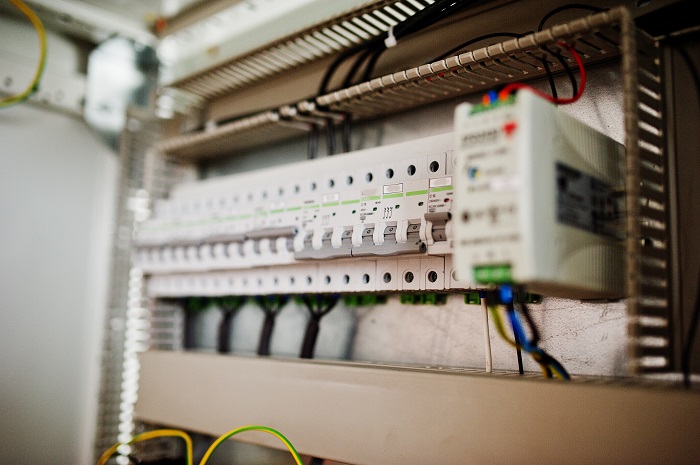In the realm of industrial and automation applications, selecting the right power supply is crucial for ensuring reliable operation and longevity of equipment. One of the fundamental choices you face is between AC (Alternating Current) and DC (Direct Current) DIN rail power supplies. Each type has its advantages and is suited to different applications based on specific needs and requirements. This article aims to provide a comprehensive guide to help you understand the differences between AC and DC DIN rail power supplies and determine which option best suits your setup.
Understanding DIN Rail Power Supplies
DIN rail power supplies are designed to provide stable and regulated electrical power to various devices and systems mounted on DIN rails, commonly found in industrial environments and control panels. These power supplies are characterized by their standardized mounting on DIN rails, which allows for easy installation, maintenance, and replacement.
AC DIN Rail Power Supplies
AC DIN rail power supplies take AC voltage from the mains power grid (typically 120V or 240V AC) and convert it to a lower, stable AC voltage suitable for powering electronic devices and equipment. Here are key considerations for AC DIN rail power supplies:
Key Features and Considerations:
- Input Voltage Compatibility: AC power supplies are compatible with standard mains voltages (e.g., 120V AC, 240V AC), making them straightforward to integrate into existing electrical systems.
- Regulated Output: They provide a regulated AC output voltage, ensuring consistent power delivery to connected devices.
- Suitability for High-Power Applications: AC power supplies are often preferred for applications requiring higher power outputs, such as industrial machinery and equipment.
- Ease of Installation: They are relatively easy to install and connect to existing AC power sources, simplifying initial setup and maintenance procedures.
- Widely Available: AC power supplies are readily available in a variety of configurations and voltage ratings, offering flexibility in meeting specific power requirements.
Typical Applications:
- Industrial Automation: Used in PLCs (Programmable Logic Controllers), motors, and other automated systems that operate on AC power.
- Building Automation: HVAC (Heating, Ventilation, and Air Conditioning) systems, lighting controls, and security systems often utilize AC power supplies.
- Commercial Applications: AC power supplies are common in retail environments for powering POS (Point of Sale) systems and display units.
DC DIN Rail Power Supplies
DC DIN rail power supplies convert AC voltage from the mains power grid to a stable DC voltage suitable for powering electronic devices and equipment. Here’s what you need to know about DC DIN rail power supplies:
Key Features and Considerations:
- DC Output: They provide a regulated DC output voltage (e.g., 24V DC, 48V DC), which is commonly used in electronics and automation due to the prevalence of DC-powered devices.
- Efficiency: DC power supplies often exhibit higher efficiency in converting AC to DC power, resulting in reduced energy consumption and heat generation.
- Safety and Stability: DC power supplies offer stable DC voltage outputs, which are crucial for sensitive electronic equipment and microprocessor-based systems.
- Compact Design: They are typically more compact and lightweight compared to AC power supplies, making them ideal for space-constrained installations. For added versatility, consider a DIN rail USB power supply which can provide convenient power to USB devices directly from your DIN rail setup.
- Integration with Battery Backup Systems: DC power supplies can be easily integrated with battery backup systems, ensuring uninterrupted power supply during mains power outages.
Typical Applications:
- Control Systems: PLCs, sensors, and actuators often require DC power supplies for reliable operation.
- Telecommunications: DC power supplies are used in telecom equipment, such as routers, switches, and communication towers.
- Data Centers: Servers, storage systems, and networking equipment in data centers are commonly powered by DC supplies for efficiency and reliability.
Choosing Between AC and DC DIN Rail Power Supplies
When deciding between AC and DC DIN rail power supplies, consider the following factors to determine which option best fits your specific application:
- Voltage Requirement: Assess whether your equipment operates on AC or DC voltage. Some devices may require a specific voltage type for optimal performance.
- Power Consumption: Calculate the total power consumption of your system to ensure the selected power supply can deliver sufficient power without overload.
- Environment and Application: Consider the operating environment (indoor/outdoor), ambient temperature, and regulatory requirements that may influence the choice between AC and DC supplies.
- Cost and Availability: Compare the initial cost, long-term maintenance, and availability of AC and DC power supplies based on your budget and procurement preferences.
- Scalability and Future Expansion: Plan for future expansions or upgrades in your system and choose a power supply that can accommodate increased power demands if necessary.
Conclusion
In conclusion, both AC and DC DIN rail power supplies offer distinct advantages depending on the specific requirements of your application. AC supplies are robust and suitable for high-power applications, while DC supplies are efficient and ideal for electronics and telecommunications. By understanding the differences outlined in this article and evaluating your system’s needs, you can make an informed decision to ensure a reliable power supply and optimal performance for your industrial or automation setup.




